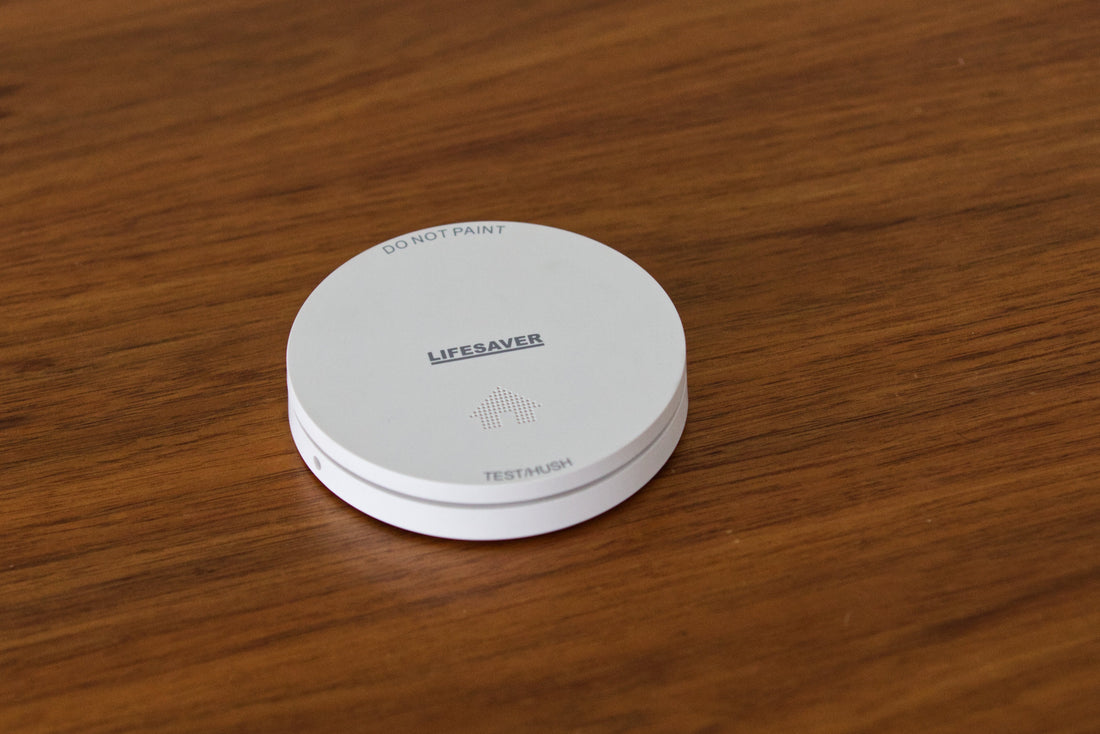
Understanding Photoelectric Smoke Alarms
Share
Over 50 Australians die on average from residential fires each year, more than all natural hazards combined. The vast majority of those fatalities could have been prevented with a simple smoke alarm.
Installing and maintaining an appropriate smoke alarm detector isn’t just a legal requirement; it could be a matter of life and death. But with two competing types on the market—photoelectric and ionisation—the average consumer might feel confused.
In this article, we’re deep-diving into the nitty-gritty details of the preferred option, the photoelectric smoke alarm. That way, you can make an informed purchase to safeguard your home.
What Is a Photoelectric Smoke Detector?
Also known as optical or photo-optical smoke alarms, the photoelectric smoke alarm uses a beam of light to detect visible smoke particles resulting from combustion.
The device has an enclosed chamber with a light sensor and an LED light inside. The LED shoots a continuous light beam across to the other side of the chamber. When smoke particles pass through the beam, they deflect it towards the light sensor, which trips the alarm.
Photoelectric versus Ionization Smoke Alarms
So what’s the difference between a photoelectric and an ionisation smoke alarm?
While the photoelectric device uses a steady LED beam and a light sensor, the ionisation alarm works in a totally different way.
The device has a sensing chamber that ionises the air inside it using a minute amount of radioactive material. Once the air has been ionised, it effectively conducts an electrical current, which will move freely between two electrodes in the chamber.
As smoke particles enter the chamber, they reduce the conductivity of the air inside, which prevents the current from crossing between the two electrodes. When the electrodes stop receiving the current, they trigger the alarm.
The Pros and Cons of Photoelectric Smoke Alarms
While the technology behind the ionisation alarm sounds impressive, this out-dated system doesn’t perform as well as the photoelectric model in almost all real-world situations.
Photoelectric smoke alarms have been proven to be more effective for residential use. The technology responds more quickly to smouldering fires, which frequently occur in Australian homes. Photoelectric alarms can also rapidly detect dense smoke, which disperses when PVC wiring overheats and foam-dense furniture catches fire—two common house fire culprits.
On the downside, photoelectric alarms don’t detect fast flaming fires as quickly as the ionisation system. However, these fires most commonly occur during the day when the homeowner is awake, typically due to cooking mishaps or the ignition of flammable materials. As you’ll most likely witness these incidents in real-time, it’s less important to receive a warning via a smoke alarm.
Furthermore, this slow response time to cooking accidents can work in your favour. As photoelectric alarms don’t detect fast flaming fires as quickly, they’re far less prone to nuisance alarms.
Not only are false alarms annoying, but they can also be deadly. Many householders get fed up and remove the batteries upon suffering excessive nuisance alarms, rendering the device completely useless. Several deaths each year in Australia could have been prevented if the homeowner hadn’t removed the batteries from their smoke alarm.
Which Smoke Alarm Type Should You Choose?
Virtually all Australian fire departments and the Fire Protection Association recommend photoelectric alarms for residential use.
What’s more, Queensland and the Northern Territory now mandate photoelectric alarms for use at home. Installing an out-dated ionisation alarm in these states is against the law and could see you facing hefty fines.
How to Maintain a Photoelectric Smoke Alarm
While installing a photoelectric smoke alarm is the first step toward safeguarding your home, it’s crucial to maintain it properly.
According to NSW Fire and Rescue, you should do the following:
- Test your smoke alarm once per month by holding down the test button until you hear the alarm sound.
- Vacuum dust off the alarm every six months to ensure smoke can reach the internal sensor.
- Replace any lead or alkaline batteries every 12 months.
- Replace your smoke alarms every ten years or more frequently if the manufacturer recommends it.
Purchase a Photoelectric Smoke Alarm from Home Safety Store
From mains-powered devices to lithium-ion-charged units, we offer a broad range of state-of-the-art photoelectric smoke alarms.
Don’t put your family at risk by purchasing a cheap, no-name alarm. At Home Safety Store, we believe in putting quality and fire safety standards first at all times. Browse our catalogue today and buy a reliable unit from a name you can trust.
